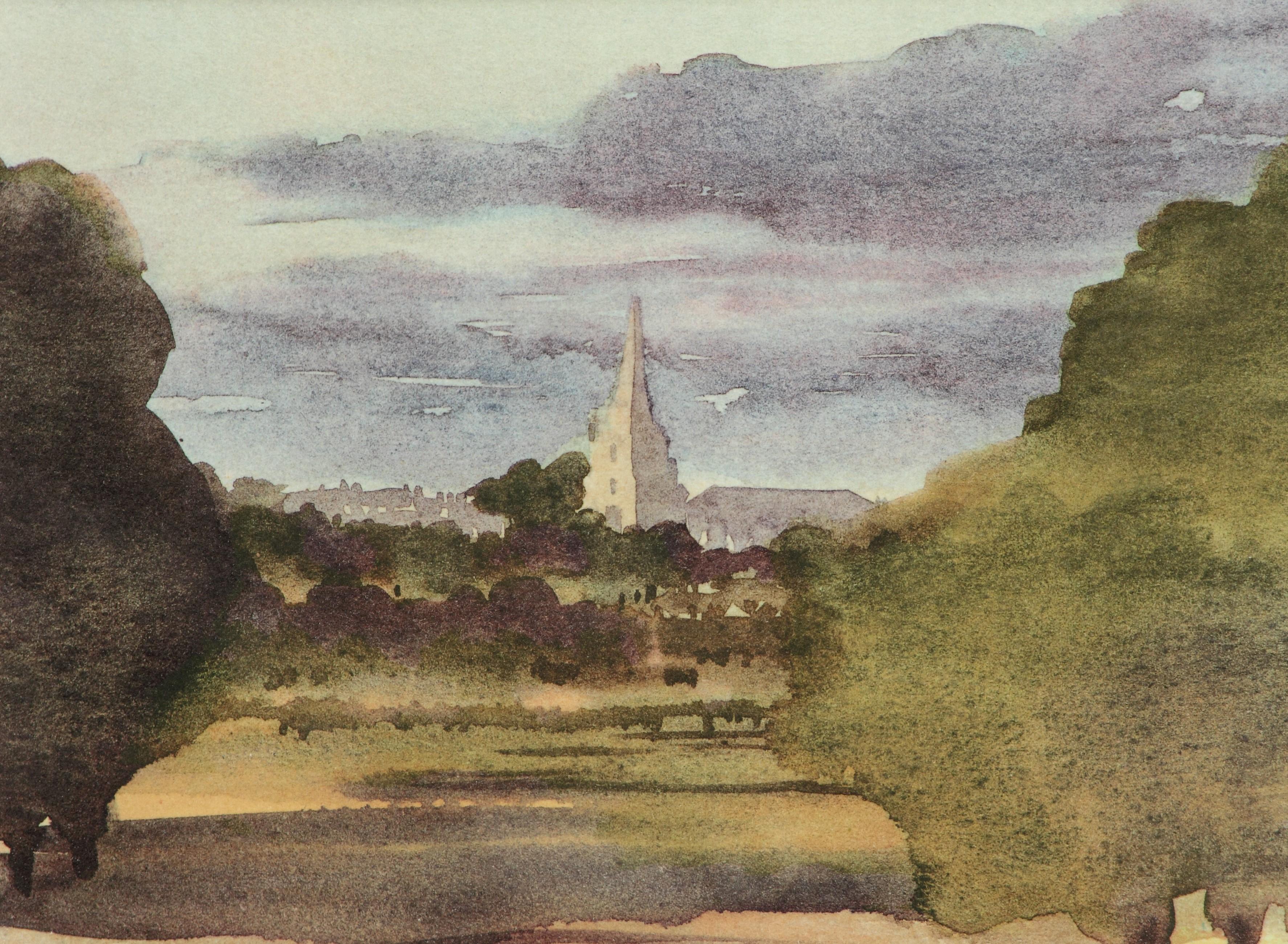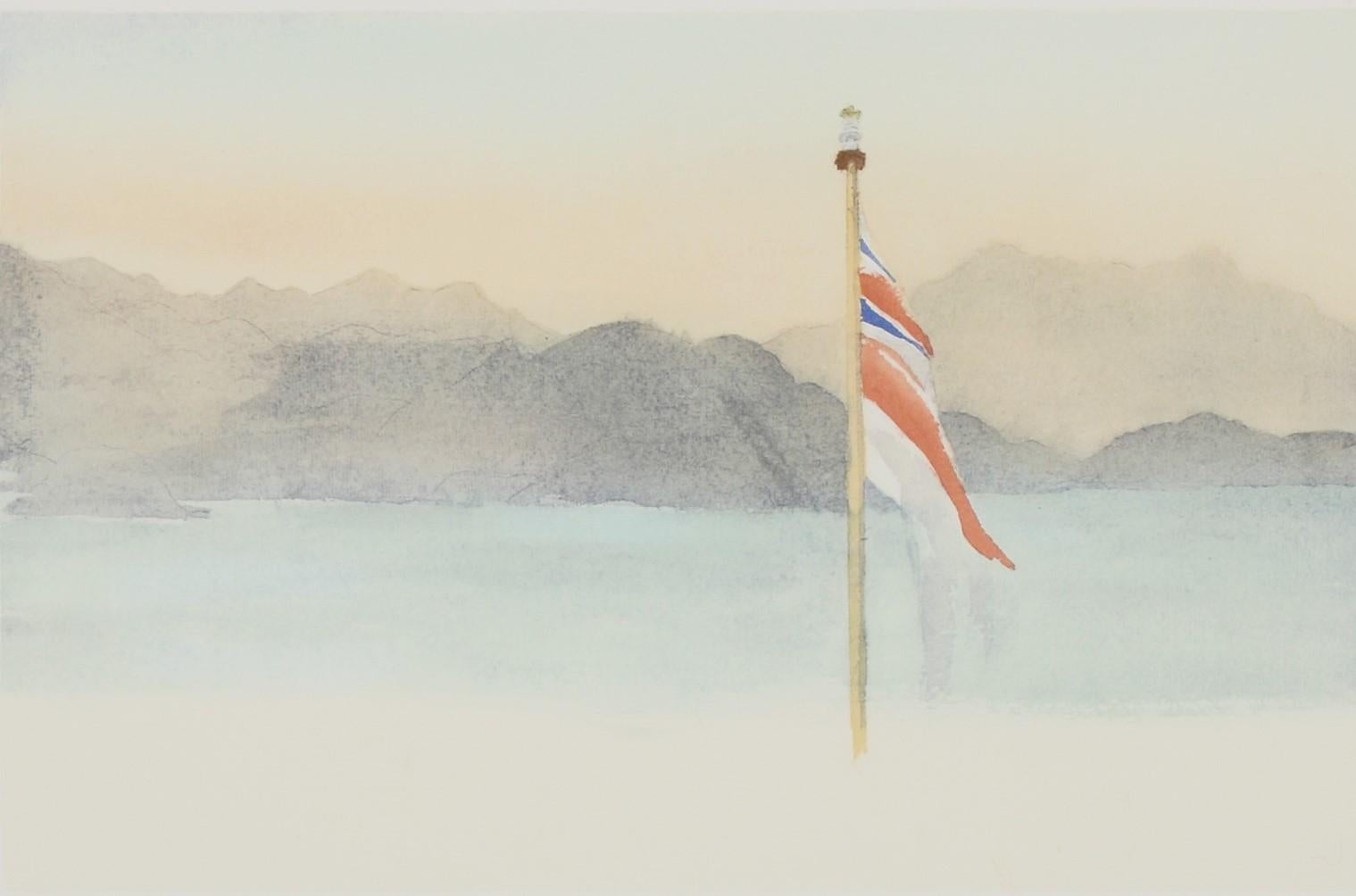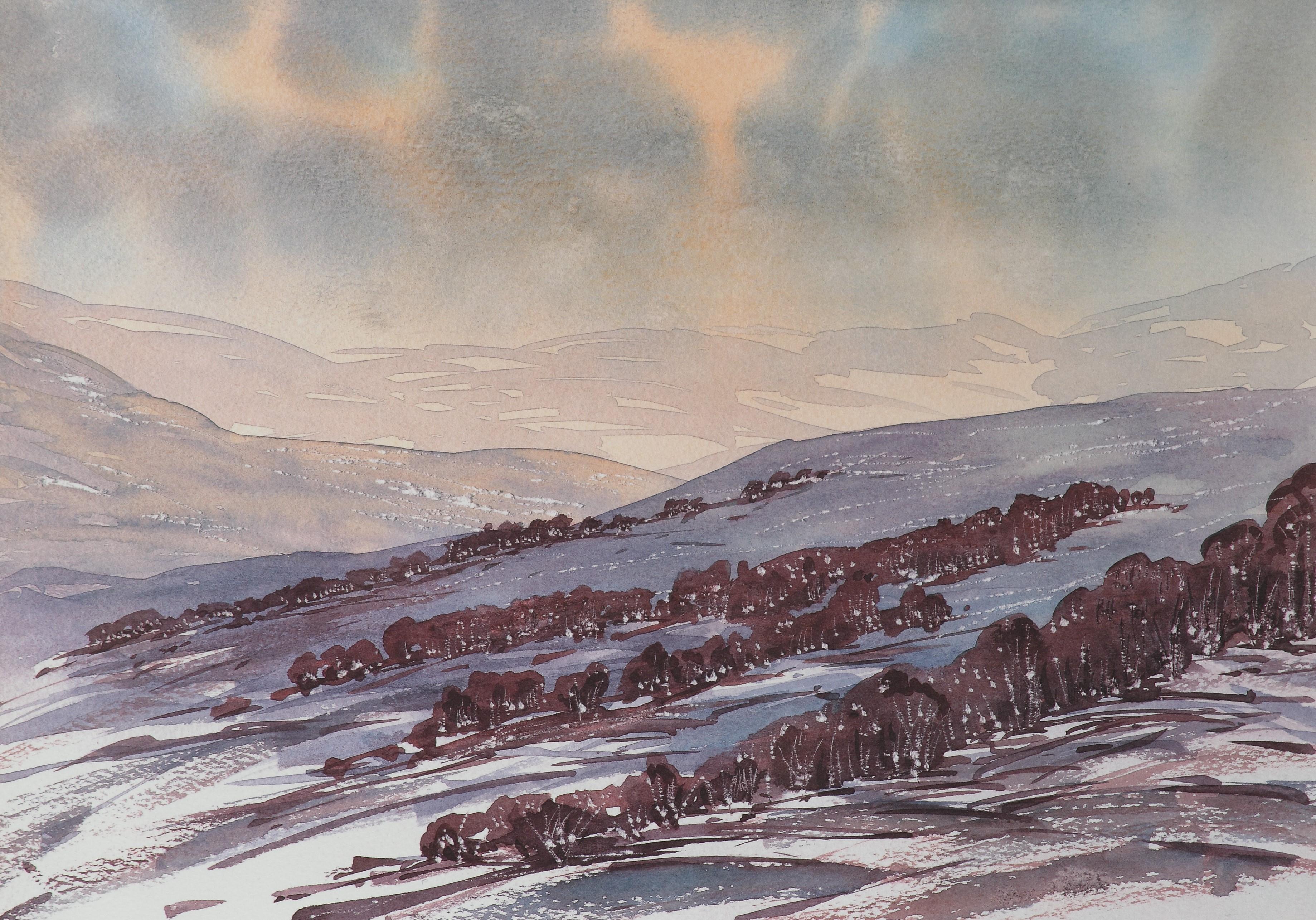Items Similar to Moths with Pupa on Holly
Want more images or videos?
Request additional images or videos from the seller
1 of 7
Maria Sibylla MerianMoths with Pupa on Holly1705
1705
About the Item
MARIA SIBYLLA MERIAN (1647-1717)
Metamorphosis Insectorum Surinamensium…
(Insects of Surinam)
Amsterdam, 1705
Hand-colored engravings.
Born in Frankfurt, Germany, then a free imperial city of the Holy Roman Empire, of a Dutch mother and a Swiss father, Maria Sibylla Merian’s life was an intriguing one both personally and professionally. Her father was Matthaus Merian, a renowned illustrator. His first marriage was to Marie Magdalena de Bry, the daughter of Theodore de Bry who was a remarkable 17th century mapmaker and botanical illustrator. Matthaus Merian would then inherit de Bry’s publishing house which included various copper plates engraved with maps and natural history subjects. Merian’s prolific publishing included theology, topography, cartography and natural history. His second marriage, to Johanna Sibylla, gave him a daughter, Maria. Shortly after Matthaus Merian’s death, Johanna Sibylla married Jacob Marrel, an accomplished instructor of drawing painting and engraving. It was Marrel who recognized the early talents of Maria Sibylla and encouraged them. Maria married one of Marrel’s students, Johann Graff of Nuremberg. She bore him two daughters, Dorothea and Johanna.
Thus Maria Merian completes three generations of published illustrators. She is notable not only for her historic accomplishments, but also for her gender breaking achievements. It can therefore come as no surprise that ultimately Maria would leave the man to whom she had been respectably married for many years, the father of her two children, take her mother’s maiden name, and join a religious sect called the Labadists to pursue her own interests and claim her own fame.
While living in the sect’s castle in Holland, Maria observed the cabinets of gorgeous tropical butterflies brought back from Surinam. Although this was the great age of botanical exploration, few artists went on expeditions; they relied on sailors and naturalists to bring them specimens. Considering the attitudes of the times, it took an intrepid and eccentric woman to have the temerity to travel to wild and unexplored lands. But that is exactly what she did. Having successfully published an earlier work on the insects of Europe, Maria, with her daughter Dorothea, exchanged the security of Holland for the rigors of a sea passage to South America. The city of Amsterdam sponsored them. Johanna had married a merchant and they relocated to Surinam. For 21 months, mother and daughters made hundreds of drawings of flowers and insects. In the task of representation, their sketches were first made from life and then painted on vellum. Maria became the first naturalist to observe and record the development of certain insects from egg, via the stages of caterpillar and chrysalis, to their final form of moth or butterfly—the ‘metamorphosis’ which became the title of her book. Poor health forced Maria to return home in 1701. But her return was triumphant; her luggage was loaded with rolled paintings, brandied butterflies, bottles with crocodiles and snakes, lizards’ eggs, bulbs, chrysalises that had not yet opened, and many round boxes filled with pressed insects for sale!
Maria Merian worked on the Metamorphosis until its publication of the original 60 plates began in 1705. It is easily the most magnificent work on insects ever produced. Though Merian’s first concern was with the insects she portrayed, the plates also show the plants on which they breed and are nurtured. This information would play an important role in the reforestation of the Amazon centuries later. Exquisitely illustrated, Metamorphosis combines science and art. Sir Sackerville Sitwell states her botanical work is “drawn with the same delicacy and precision as the insects themselves, and the book may thus legitimately be considered a florilegium…” Part of their powerful effect stems from the fact that the insects and their surroundings are drawn life-size.
Posthumous issues of Metamorphosis contained not only the original 60 plates but also 12 additional engravings. These featured the reptiles, amphibians and marsupials, which were to have provided material for an unpublished second volume. Maria’s other daughter, Johanna, had returned to Surinam to make more drawings, which were combined with Maria and Dorothea’s earlier work and used for the second, larger edition of the book. Obviously, the Merian women had been bitten by the same bug.
Reference:
Maria Sibylla Merian, Artist and Naturalist. Kurt Wettengl, Germany, 1997.
Maria Sibylla Merian, The St. Petersburg Watercolors. Eckhard Hollmann. New York, 2003.
- Creator:Maria Sibylla Merian (1647 - 1717, Dutch)
- Creation Year:1705
- Dimensions:Height: 25.25 in (64.14 cm)Width: 20.75 in (52.71 cm)
- Medium:
- Movement & Style:
- Period:1700-1709
- Condition:Clean, crisp image. Beautiful hand-coloring. Framed to museum specifications using archival matting, backing, hinging. Linen mat. Glazed with ultra-violet filtering Plexiglas.
- Gallery Location:Florham Park, NJ
- Reference Number:
Maria Sibylla Merian
Maria Sibylla Merian (1647—1717) was a naturalist and artist. Her contributions to entomology were never appropriately recognized in her lifetime. She is now considered to be a pioneer in the fields of botany and zoology. She made detailed observations of live specimens, which was a departure from previous studies that used preserved specimens. She focused great detail on the processes of metamorphosis, which had not been studied so comprehensively before her work. The engravings for the publication were done by J. Mulder, P. Sluyter and A. Stopendaal, all after paintings on vellum by Merian. The work is considered to be one of the most beautiful, and famous illustrated natural history works of the 18th century. The work was the result of Merian's trip in 1699 with her daughter Dorothea to Surinam, a Dutch colony on the northeastern coast of South America. The pair studied and recorded plants and insects for two years under difficult conditions. They came back to Amsterdam with specimens, notes and drawings and there completed their astounding work. One naturalist proclaimed "Her portrayals of living insects and other animals were imbued with a charm, a minuteness of observation and an artistic sensibility that had not previously been seen in a natural history book; if Gould and Audubon have 'a spiritual ancestor, then it is difficult to think of a more worthy claimant to the title than Maria Sibylla Merian." On the day Maria Sibylla Merian died, Tsar Peter the Great purchased a two-volume collection of her unbound paintings, as well as her journal. Born in Frankfurt am Main, Maria Sibylla Merian was the daughter of Matthaus Merian the Elder (1593—1650), a famous German-Swiss painter, engraver and publisher. Her father died when she was three and her mother remarried Jacob Marrel (1614-1681), who was a still-life painter. From the time she was eleven, Marrel schooled Maria Sibylla Merian in the tradition of northern European still life painting, working directly from life. As her interests evolved toward the study of insects, she employed these artistic skills to create her outstanding scientific and esthetically beautiful works. She was truly at the crossroads of art and science.
About the Seller
5.0
Vetted Seller
These experienced sellers undergo a comprehensive evaluation by our team of in-house experts.
1stDibs seller since 2014
161 sales on 1stDibs
Typical response time: 2 hours
- ShippingRetrieving quote...Ships From: Florham Park, NJ
- Return PolicyA return for this item may be initiated within 1 day of delivery.
More From This SellerView All
- Northern HareBy John James AudubonLocated in Florham Park, NJJOHN JAMES AUDUBON John Bachman The Viviparous Quadrupeds of North America Published by V.G. Audubon Lithograph with Original Hand-Coloring New York 1849. Royal Octavo Edition ...Category
Mid-19th Century Academic Prints and Multiples
MaterialsLithograph
- Gemaltes Ornament. (Etruscan Vase Design),Located in Florham Park, NJARCHIV FUR ORNAMENTALE KUNST. M. Gropius, L. Lohde, P. Lehfeldt. Chromolithograph. Berlin, 1870. 13” x 19” Unframed. A fine German work, the illustrations are of classical and neo-classical decorative designs. The acanthus leaf, Greco-Roman busts, mythical animals and ornamental relief show the preferred style of architectural ornament over the centuries and from country to country. A trick of the lithographer was to use the occasional solid ground to give better dimension to the plate. Measuring 19” x 13”, many designs include a scale to show actual size. Only two of the 72 illustrations were printed in full color, another pair in sepia tones, and six in burnt orange and black to show typical Etruscan designs. Several have toned backgrounds. It has been the fashion to apply hand coloring to black and white engravings and lithographs for centuries. The superb condition can be attributed to the individual paper guards placed between each plate. Many of the pieces illustrated are in museums; i.e. a Greek painted portrait medallion is preserved in the Classical Museum...Category
Late 19th Century Academic Prints and Multiples
MaterialsLithograph
- Rouen DucksBy J.W. LudlowLocated in Florham Park, NJThe Book of Poultry J. W. Ludlow, artist Lewis Wright (1838-1905), editor Cassell, Petter & Galpin London, Paris, New York, 1880 Vincent Brooks Day & Son Chromolithography ...Category
Late 19th Century Academic Prints and Multiples
MaterialsLithograph
- Initial Letters "A" (Alphabet)By Owen JonesLocated in Florham Park, NJONE THOUSAND AND ONE INITIAL LETTERS Owen Jones (1806-1889) Day & Sons London, 1864 Chromolithographs One Thousand and One Initial Letters playfully describes an artistic endeavor by Owen Jones. Teaching Applied Arts at the South Kensington School of Design, Jones honed his skills at transforming historical design into contemporary brilliance. Never imitating or duplicating, he remained true to the times and the materials available. Like his fellow artists, architects, painters and poets, he was on the cusp of change. In Jones’ lifetime a new aesthetic would develop. By the centuries’ end it would become an era with a heighten sense of nature coupled with design. The phrase ‘Art...Category
Mid-19th Century Academic Prints and Multiples
MaterialsLithograph
- Plate XLIII Ungulata (Giraffes)By Henry J. JohnsonLocated in Florham Park, NJJOHNSON’S HOUSEHOLD BOOK OF NATURE Craig Hugh, Editor Henry J. Johnson, Publisher New York, 1880 64 Chromolithographs “…full & interesting description...Category
Late 19th Century Academic Prints and Multiples
MaterialsLithograph
- Toulouse GeeseBy J.W. LudlowLocated in Florham Park, NJThe Book of Poultry J. W. Ludlow, artist Lewis Wright (1838-1905), editor Cassell, Petter & Galpin London, Paris, New York, 1880 Vincent Brooks Day & Son Chromolithography ...Category
Early 19th Century Academic Prints and Multiples
MaterialsLithograph
You May Also Like
- Tetbury Church - Signed Lithograph, Royal Art, Royal Heritage, Cotswolds, BritishLocated in Knowle Lane, CranleighTetbury Church by His Majesty King Charles III - Hand Signed Limited Edition Lithograph. Belgravia Gallery has been honoured to be associated with ...Category
1990s Academic Landscape Prints
MaterialsLithograph
- Overlooking Wadi, Saudi Arabia - Signed Lithograph, Royal Art, Mountains, AsirLocated in Knowle Lane, CranleighOverlooking Wadi, Asir Province, Kingdom Of Saudi Arabia by His Majesty King Charles III, (created when he was HRH The Prince of Wales) - ...Category
Early 2000s Academic Landscape Prints
MaterialsLithograph
- Windsor Castle - Signed Lithograph, Royal Art, Royal Homes, Windsor Castle, BritishLocated in Knowle Lane, CranleighWindsor Castle by HM King Charles III - Hand Signed Limited Edition Lithograph. Belgravia Gallery has been honoured to be associated with the artwo...Category
1990s Academic Landscape Prints
MaterialsLithograph
- Hong Kong from HMY Britannia - Signed Lithograph, Royal Art, Union Jack,Located in Knowle Lane, CranleighHong Kong From HMY Britannia by HM King Charles III - Hand Signed Limited Edition Lithograph. Belgravia Gallery has been honoured to be associated ...Category
Early 2000s Academic Landscape Prints
MaterialsLithograph
- Glengairn, Aberdeenshire - Signed Lithograph, Royal Art, Scotland, BritishLocated in Knowle Lane, CranleighGlengairn, Aberdeenshire, January by His Majesty King Charles III - Hand Signed Limited Edition Lithograph. Belgravia Gallery has been ...Category
Early 2000s Academic Landscape Prints
MaterialsLithograph
- Wensleydale from Moorcock - Signed Lithograph, Royal Art, Yorkshire, LandscapeLocated in Knowle Lane, CranleighWensleydale from Moorcock by His Majesty King Charles III (created when he was HRH Prince Charles, The Prince of Wales) - Hand Signed Lim...Category
1990s Academic Landscape Prints
MaterialsLithograph
Recently Viewed
View AllMore Ways To Browse
The Hollies
Lithographs On Sale
Womens On Sale
Mother And Daughters Print
Antique Cans And Bottles
Woman With Butterflies
Woman With Butterfly
Antique Moth
Snake Print Art
Roman Empire Art
On Copper 17th
Antique Religious Art Prints
Antique Art Exchange
Antique And Art Exchange
Crocodile Print
Round Luggage
Month Flower Prints
Lithographs Marriage






